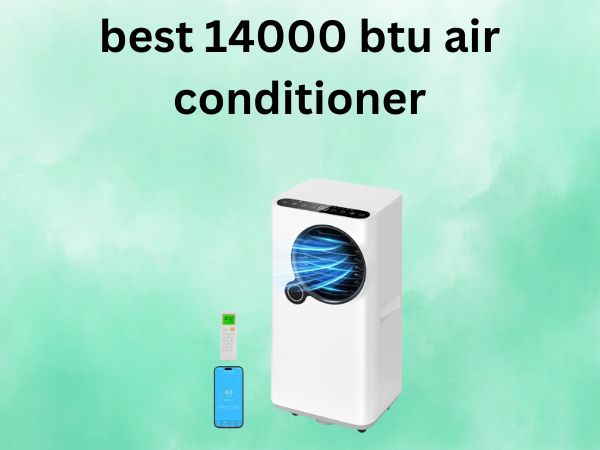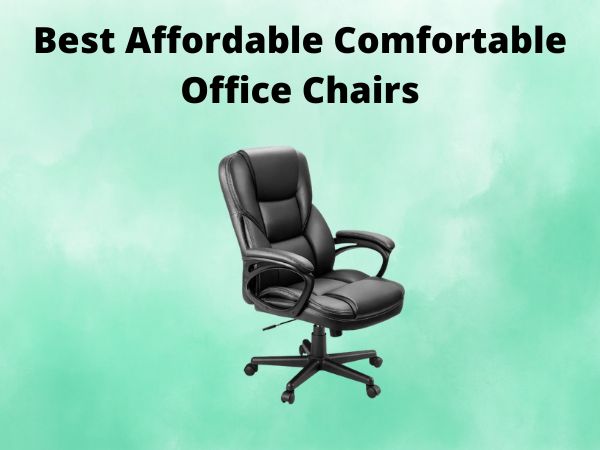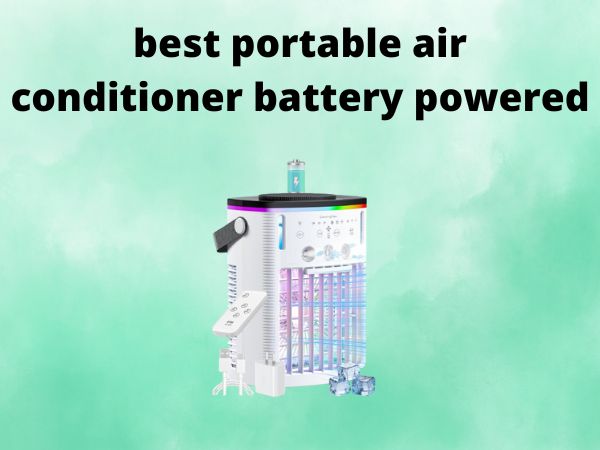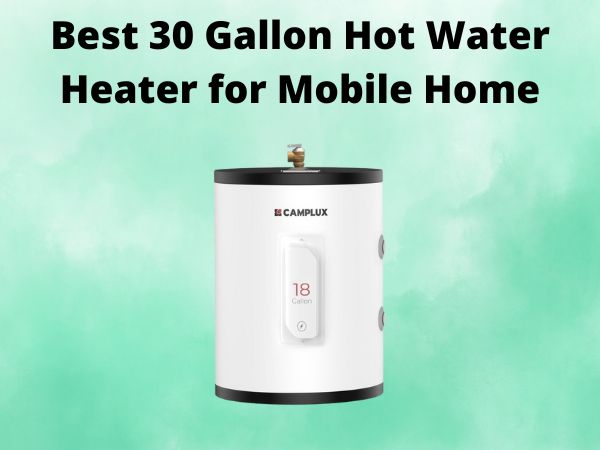5 Best 14,000 BTU Air Conditioners [In 2026]
Are you tired of sweltering summer heat making your home unbearable? Looking for the perfect cooling solution that won’t break the bank or your eardrums? You’ve come to the right place! Finding the ideal 14,000 BTU air conditioner can feel like searching for a needle in a haystack, but we’re here to make your decision crystal clear.
Table of Contents
The 5 Best 14,000 BTU Air Conditioners: Our Top Picks for 2025
After extensive research and real-world testing feedback, we’ve narrowed down the best options that deliver exceptional cooling, reliability, and value. Each unit on our list brings something unique to the table, so you can find the perfect match for your specific needs.
1. Whynter ARC-14S: The Gold Standard for Portable Cooling
Award Winner: Good Housekeeping’s 2025 “Best Overall Portable Air Conditioner”
The Whynter ARC-14S isn’t just another portable AC – it’s a cooling powerhouse that’s earned its stripes through real-world performance. With dual-hose technology and impressive cooling capacity, this unit stands head and shoulders above the competition.
Key Specifications:
- Cooling Power: 14,000 BTU (9,500 SACC)
- Room Coverage: Up to 500 sq ft
- Dehumidifying Capacity: 71 pints per day
- Noise Level: 51 dB
- SEER Rating: 7.69
- Dimensions: 19″D x 16″W x 35.5″H
What Makes It Special: The dual-hose design sets this unit apart from single-hose competitors. While most portable ACs create negative pressure by pulling air from your room and exhausting it outside, the Whynter uses separate intake and exhaust hoses. This means your cool air stays inside where it belongs!
Pros:
- Exceptional Cooling Performance: Users report 30-35°F temperature drops, with output air as low as 27°F
- Upward Air Distribution: Perfect for rooms with vaulted ceilings, ensuring even temperature distribution
- Auto-Drain Function: Patented system eliminates manual draining in most environments
- CFC-Free Refrigerant: Environmentally conscious R-32 refrigerant
- Comprehensive Kit: Includes extendable hoses, window kit, and washable filters
- Quiet Operation: At 51 dB, it’s quieter than many competitors
Cons:
- Sleep Mode Cycling: Frequent on/off cycling can disturb light sleepers (1°F temperature band)
- Limited Remote Range: Remote requires close proximity and direct line of sight
- Blue Display Visibility: LED display can be difficult to read from certain angles
- No Wi-Fi Connectivity: Lacks smart home integration features
Best For: Users who prioritize cooling performance over smart features, especially those with larger rooms or challenging cooling conditions.
2. BLACK+DECKER BPACT14WT: Smart Cooling Made Simple
The Connected Choice for Tech-Savvy Users
BLACK+DECKER brings smart technology to portable cooling with their feature-rich BPACT14WT. This isn’t just an air conditioner – it’s your personal climate control assistant that responds to voice commands and smartphone apps.
Key Specifications:
- Cooling Power: 14,000 BTU ASHRAE (10,200 BTU SACC)
- Room Coverage: Up to 700 sq ft
- Dehumidifying Capacity: 44.2 liters
- SEER Rating: 6.2
- Dimensions: 14.06″D x 16.5″W x 27.09″H
- Smart Features: Wi-Fi, app control, Alexa/Google compatibility
Smart Features That Matter: The “Follow Me” remote function is a game-changer. It uses the remote as a wireless thermostat, measuring temperature at your exact location rather than at the unit. This means more precise comfort control, especially in larger rooms.
Pros:
- Smart Home Integration: Works with Alexa, Google Assistant, and smartphone apps
- Follow Me Technology: Remote acts as a wireless thermostat for precise control
- Compact Design: Smaller footprint than many 14,000 BTU units
- Easy Installation: Straightforward window kit setup
- Three-in-One Functionality: AC, dehumidifier, and fan modes
- Brand Reliability: BLACK+DECKER’s proven track record in home appliances
Cons:
- Remote Backlight: No illuminated remote for dark room use
- Single Hose Design: Less efficient than dual-hose systems
- Casement Window Challenges: May require custom installation for non-standard windows
- Higher Price Point: Premium features come with premium pricing
Best For: Tech enthusiasts who want voice control and smartphone integration, plus anyone who values precise temperature control.
3. Dreo AC516S: The Maintenance-Free Marvel
Revolutionary Drainage-Free Technology
If you’re tired of constantly emptying water tanks, the Dreo AC516S might be your cooling salvation. This innovative unit reduces drainage needs by 90% compared to traditional portable ACs, making it virtually maintenance-free.
Key Specifications:
- Cooling Power: 14,000 BTU ASHRAE
- Room Coverage: Up to 400 sq ft
- Cooling Range: 16 ft reach
- Noise Level: 46 dB (ultra-quiet)
- Dimensions: 14.37″D x 17.32″W x 28.13″H
- Smart Features: App control, voice commands, 4 fan speeds
Innovation That Works: The advanced noise-isolation system doesn’t just make this unit quiet – it makes it whisper-quiet at 46 dB. That’s quieter than most libraries! The compressor isolation technology means you can run this in bedrooms, nurseries, or offices without disturbing anyone.
Pros:
- Nearly Drainage-Free: 90% reduction in water tank emptying
- Ultra-Quiet Operation: 46 dB noise level ideal for bedrooms
- Smart Connectivity: Full app and voice control integration
- Universal Window Compatibility: Fits double-hung, sliding, and casement windows
- 24/7 Technical Support: U.S.-based HVAC specialists available
- Advanced Noise Isolation: Revolutionary compressor isolation system
Cons:
- Smaller Coverage Area: 400 sq ft maximum compared to competitors
- High Humidity Limitations: Drainage-free system works best under 85% humidity
- New Brand Recognition: Less established than traditional HVAC brands
- Premium Pricing: Advanced features come at a higher cost
Best For: Apartment dwellers, bedroom use, or anyone who wants set-it-and-forget-it convenience without constant maintenance.
4. LG DUAL Inverter Smart Window AC: Maximum Efficiency Champion
The Energy-Saving Powerhouse
When energy efficiency meets smart technology, you get the LG DUAL Inverter. This window unit proves that traditional installations can compete with portable units in both performance and features.
Key Specifications:
- Cooling Power: 14,000 BTU
- Room Coverage: Up to 700 sq ft (20′ x 40′)
- Energy Rating: ENERGY STAR certified, 35% more efficient than requirements
- Noise Level: As low as 44 dB in sleep mode
- Dimensions: 28.78″D x 23.6″W x 15″H
- Weight: 70 lbs
DUAL Inverter Technology Explained: Traditional AC compressors are like light switches – they’re either fully on or completely off. LG’s DUAL Inverter technology works more like a dimmer switch, continuously adjusting cooling power to maintain your desired temperature. This means fewer temperature fluctuations and significantly lower energy consumption.
Pros:
- Superior Energy Efficiency: 35% more efficient than ENERGY STAR requirements
- Exceptional Quiet Operation: 44 dB in sleep mode
- Smart Home Integration: LG ThinQ, Alexa, and Google compatibility
- Stable Installation: No risk of portable unit movement or hose disconnection
- Multiple Speed Options: 4 cooling and fan speeds with Auto Cool
- Proven Reliability: LG’s reputation for durable appliances
Cons:
- Permanent Installation: Requires window modification and can’t be moved easily
- Heavy Unit: 70 lbs requires careful installation, preferably with help
- Window Requirements: Limited to compatible window types and sizes
- Seasonal Storage: Must be removed and stored during off-season in some climates
Best For: Homeowners with compatible windows who want maximum efficiency and don’t need portability.
5. De’Longhi PACEX390UVcare: The Health-Conscious Choice
Advanced Air Purification Meets Cooling Power
De’Longhi takes portable cooling to the next level with UV-Care technology and Cool Surround Bluetooth connectivity. This isn’t just about temperature – it’s about creating a healthier indoor environment.
Key Specifications:
- Cooling Power: 14,000 BTU
- Special Features: UV-Care light, Cool Surround Technology
- Filter Type: Silver Ion Filter
- Refrigerant: R-410A
- Multiple Functions: 3-in-1 AC, dehumidifier, and fan
- Remote Features: Bluetooth temperature/humidity monitoring
Cool Surround Technology: Imagine having a personal weather station that follows you around. The Bluetooth-enabled remote monitors temperature and humidity at your exact location, then tells the AC to deliver targeted cooling right where you need it most.
Pros:
- UV-Care Technology: Advanced air purification for healthier indoor air
- Cool Surround Bluetooth: Targeted cooling based on remote sensor location
- Whisper-Quiet Operation: Notably quieter than many competitors
- Silver Ion Filter: Advanced filtration beyond standard mesh filters
- Motorized Air Direction: Automatic louver adjustment for optimal airflow
- Easy Mobility: Cast handles and wheels for effortless room-to-room movement
Cons:
- Renewed/Refurbished: Often sold as renewed units with limited warranty
- Missing Accessories: Some refurbished units lack storage covers or accessory bags
- Limited Smart Features: No Wi-Fi or app control compared to newer models
- Price Variability: Availability and pricing can be inconsistent
Best For: Health-conscious users who want air purification along with cooling, especially those sensitive to air quality issues.
Essential Buying Guide: What to Consider Before You Buy
Choosing the right 14,000 BTU air conditioner involves more than just picking the highest-rated model. Your specific needs, room characteristics, and lifestyle preferences all play crucial roles in finding your perfect cooling companion.
Room Size Calculations: Getting the Math Right
The “14,000 BTU = 700 sq ft” rule is a starting point, not gospel. Here’s how to calculate your actual needs:
Basic Formula: Square footage × 20 BTU = minimum BTU requirement
Adjustment Factors:
- High ceilings (over 8 feet): Add 10% BTU capacity
- South-facing rooms: Add 10% for sun exposure
- Kitchen use: Add 4,000 BTU for cooking heat
- Multiple occupants: Add 600 BTU per additional person
- Poor insulation: Add 15-20% capacity
Real-World Example: A 500 sq ft bedroom with 10-foot ceilings facing south would need: 500 × 20 × 1.1 × 1.1 = 12,100 BTU minimum. A 14,000 BTU unit provides comfortable overhead capacity.
Energy Efficiency: Understanding the Numbers
SEER (Seasonal Energy Efficiency Ratio): Higher numbers mean better efficiency. Look for SEER ratings of 7.0 or higher in portable units, 10.0+ in window units.
Energy Star Certification: These units meet strict efficiency guidelines. While not all 14,000 BTU portables qualify (due to inherent design limitations), certified units can save you hundreds annually.
EER (Energy Efficiency Ratio): This measures efficiency at peak conditions. An EER of 8-10 is good for portable units, 10-12 for window units.
Installation Considerations: Portable vs. Window
Portable Unit Advantages:
- No permanent installation required
- Flexibility to move between rooms
- Renter-friendly solution
- Works with various window types
Window Unit Advantages:
- More efficient cooling per BTU
- No floor space required
- Generally quieter operation
- Better security (no open window with hose)
Installation Requirements:
- Electrical: Most 14,000 BTU units require 115V, 15-amp circuits
- Window Access: Minimum 6-inch diameter opening for portable exhaust
- Clearance: 2-3 feet around unit for proper airflow
- Drainage: Consider proximity to drain or window for condensate removal
Smart Features: Which Ones Actually Matter?
Modern air conditioners come loaded with high-tech features, but which ones enhance your daily life versus just marketing fluff?
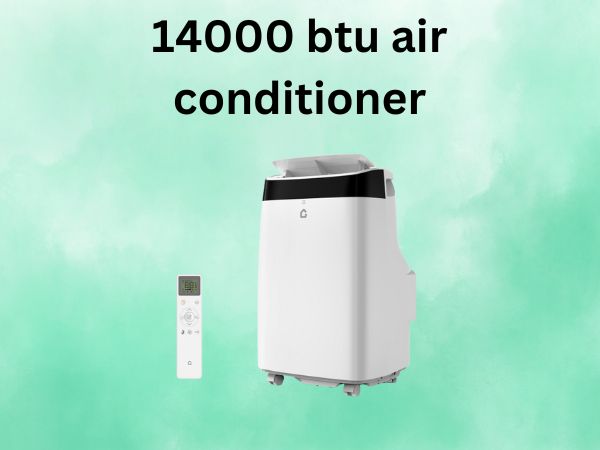
Essential Smart Features:
- Smartphone Apps: Remote control from anywhere, scheduling, energy monitoring
- Voice Control: Hands-free operation with Alexa or Google Assistant
- Programmable Timers: Automatic on/off scheduling for energy savings
- Sleep Modes: Gradual temperature adjustment for comfortable sleeping
Nice-to-Have Features:
- Follow Me Technology: Remote acts as wireless thermostat
- Geofencing: Automatic on/off based on your location
- Energy Usage Reports: Track consumption and costs through apps
- Multiple User Profiles: Different preferences for family members
Overrated Features:
- Excessive Fan Speeds: More than 4 speeds rarely provides meaningful benefits
- Complex Programming: If it requires a manual to set up, most people won’t use it
- Decorative Lighting: LED displays that can’t be dimmed become bedroom nuisances
Understanding 14,000 BTU Requirements: Is This the Right Size for You?
Before diving into our top picks, let’s talk about whether a 14,000 BTU air conditioner is right for your space. BTU stands for British Thermal Unit, and it measures how much heat your AC can remove from a room per hour. Think of it as your cooling horsepower!
A 14,000 BTU unit typically cools spaces between 400-700 square feet, depending on factors like ceiling height, insulation, and sun exposure. If you’re cooling a master bedroom, large living room, or open-concept area, this size hits the sweet spot between power and efficiency.
But here’s the thing – bigger isn’t always better. An oversized unit will cycle on and off frequently, creating temperature fluctuations and higher humidity levels. An undersized unit will run constantly, driving up your energy bills without achieving comfortable temperatures.
Maintenance Made Simple: Extending Your AC’s Life
Proper maintenance isn’t just about cleanliness – it’s about protecting your investment and ensuring peak performance throughout the cooling season.
Monthly Tasks:
- Filter Cleaning: Rinse washable filters, replace disposables
- Coil Inspection: Check for dust buildup on evaporator coils
- Drain Pan: Empty and clean condensate collection areas
- Hose Checks: Ensure exhaust hoses remain connected and unkinked
Seasonal Maintenance:
- Deep Filter Cleaning: Soak washable filters in mild detergent solution
- Coil Cleaning: Professional cleaning or careful DIY with coil cleaner
- Refrigerant Check: Professional inspection if cooling seems inadequate
- Storage Preparation: Proper cleaning and storage for portable units
Red Flags Requiring Professional Service:
- Ice buildup on coils during operation
- Unusual noises (grinding, squealing, clicking)
- Reduced cooling performance despite clean filters
- Water leakage not related to condensate drainage
- Electrical issues (tripping breakers, burning smells)
Troubleshooting Common Problems: DIY Solutions
Before calling for service, try these common fixes that solve 80% of air conditioner issues:
Problem: Unit runs but doesn’t cool effectively
- Solution: Clean/replace air filter, check for blocked vents, ensure proper exhaust hose installation
- Advanced Check: Verify refrigerant levels (professional service required)
Problem: Excessive noise during operation
- Solution: Check for loose panels, clean fan blades, ensure unit sits level
- Portable Specific: Verify exhaust hose isn’t vibrating against window or wall
Problem: Water leakage inside room
- Solution: Check condensate drain, ensure unit sits level, clean drain pan
- Prevention: Regular maintenance prevents most drainage issues
Problem: Unit cycles on/off frequently
- Solution: Check for oversized unit, blocked airflow, or thermostat location issues
- Professional Fix: May require refrigerant adjustment or compressor service
Problem: Remote control not responding
- Solution: Replace batteries, check line-of-sight, reset unit power
- Smart Units: Check Wi-Fi connection and app updates
Cost Analysis: Initial Investment vs. Long-Term Savings
Understanding the total cost of ownership helps you make informed decisions beyond just the purchase price.
Initial Investment Breakdown:
- Budget Range: $400-600 for basic 14,000 BTU portable units
- Mid-Range: $600-900 for smart features and better efficiency
- Premium Options: $900-1,200 for advanced technology and superior build quality
- Installation Costs: $0-200 depending on complexity and professional help needed
Operating Costs (Annual Estimates):
- Efficient Units (SEER 8+): $300-500 annual electricity costs
- Standard Units (SEER 6-7): $500-700 annual electricity costs
- Usage Variables: Running 8 hours daily during 4-month cooling season
Hidden Costs to Consider:
- Filter Replacements: $20-50 annually
- Professional Maintenance: $100-150 annual service calls
- Energy Bill Impact: Potential electrical system upgrades for high-BTU units
Break-Even Analysis: A $200 difference between an efficient and standard unit typically pays for itself within 18-24 months through energy savings. Over a 10-year lifespan, efficient units can save $1,000+ in operating costs.
Making Your Final Decision: Which AC Is Right for You?
After reviewing all these options, how do you choose? Let’s break it down by user type and specific needs:
For Maximum Cooling Power: Choose the Whynter ARC-14S. Its dual-hose design and exceptional cooling performance make it ideal for challenging cooling situations, large rooms, or areas with high heat loads.
For Smart Home Integration: The BLACK+DECKER BPACT14WT offers the best combination of smart features, voice control, and reliable cooling performance. Perfect for tech-savvy users who want convenience.
For Bedroom Use: The Dreo AC516S wins with its ultra-quiet 46 dB operation and drainage-free design. Ideal for light sleepers or anyone who wants minimal maintenance.
For Energy Efficiency: The LG DUAL Inverter delivers unmatched efficiency for those with compatible windows. Best long-term value for permanent installations.
For Air Quality Concerns: The De’Longhi PACEX390UVcare provides cooling plus air purification, perfect for allergy sufferers or health-conscious users.
Frequently Asked Questions
Q1: How much electricity does a 14,000 BTU air conditioner use?
A 14,000 BTU air conditioner typically uses between 1,200-1,600 watts of electricity, depending on efficiency ratings and operating conditions. This translates to roughly $300-700 annually in electricity costs, assuming 8 hours daily use during a 4-month cooling season. Energy-efficient models with higher SEER ratings will be on the lower end of this range, while older or less efficient units consume more power. To calculate your specific costs, multiply the unit’s wattage by your local electricity rate and estimated usage hours.
Q2: Can a 14,000 BTU air conditioner cool multiple rooms?
While a 14,000 BTU unit has enough power for spaces up to 700 square feet, it cannot effectively cool multiple separate rooms unless they have open connections allowing air circulation. Air conditioners work best when cooling a single, defined space. For multiple rooms, consider installing multiple smaller units or upgrading to a central air system. Portable units can be moved between rooms, but you’ll need to reinstall the exhaust hose each time, making this impractical for daily use.
Q3: What’s the difference between BTU and SACC ratings?
BTU (British Thermal Unit) represents the theoretical maximum cooling capacity under ideal laboratory conditions. SACC (Seasonally Adjusted Cooling Capacity) provides a more realistic measurement of actual cooling performance in real-world conditions, accounting for factors like duct losses and cycling inefficiencies. For portable air conditioners, SACC ratings are typically 30-40% lower than BTU ratings. For example, a 14,000 BTU portable unit might have a 9,500-10,200 SACC rating. Always use SACC when determining if a portable unit will adequately cool your space.
Q4: Do I need a dual-hose or single-hose portable air conditioner?
Dual-hose portable air conditioners are significantly more efficient than single-hose models. Single-hose units create negative pressure by pulling air from your room and exhausting it outside, causing warm outdoor air to infiltrate through cracks and openings. Dual-hose units use separate intake and exhaust hoses, preventing this pressure imbalance and maintaining cooler indoor temperatures. While dual-hose units cost more upfront, they provide better cooling performance and lower operating costs, making them worth the investment for most users.
Q5: How often should I clean or replace my air conditioner filter?
Check your air conditioner filter monthly during heavy use periods and clean or replace as needed. Washable filters should be cleaned every 2-4 weeks, depending on dust levels and usage frequency. Rinse washable filters with lukewarm water, let them dry completely, and reinstall. Disposable filters typically need replacement every 1-3 months. Dirty filters reduce airflow, decrease efficiency, and can cause the unit to freeze up or overheat. In dusty environments, pet-friendly homes, or during high pollen seasons, more frequent cleaning may be necessary for optimal performance.
Conclusion: Stay Cool and Make the Smart Choice
Choosing the right 14,000 BTU air conditioner doesn’t have to be overwhelming. Whether you prioritize raw cooling power, smart features, energy efficiency, or whisper-quiet operation, there’s a perfect unit waiting for you.
Remember, the “best” air conditioner is the one that matches your specific needs, room characteristics, and lifestyle preferences. A $400 unit that perfectly suits your space will always outperform a $1,000 unit that’s wrong for your situation.
Consider your priorities: Do you need portable flexibility or maximum efficiency? Is smartphone control worth extra cost, or do you prefer simple, reliable operation? Are you cooling a bedroom where noise matters, or a living area where performance trumps sound levels?
Take time to measure your space accurately, consider your climate challenges, and think about how you’ll actually use the unit day-to-day. The perfect cooling solution is waiting – you just need to match your needs with the right technology.
Stay cool, make informed decisions, and enjoy comfortable summers ahead!

